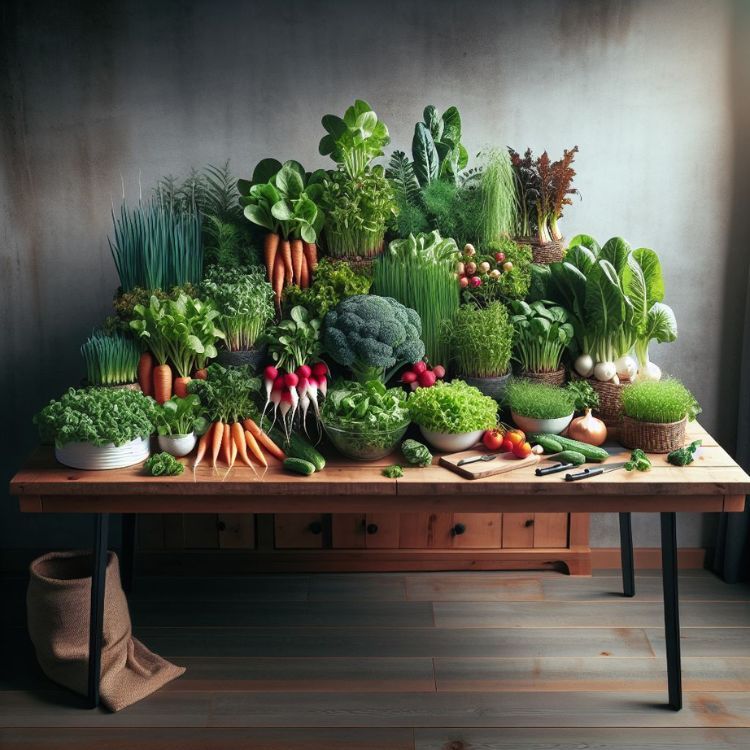
Key Takeaways
- Radishes can sprout in as little as 21 days and are one of the fastest vegetables you can grow.
- Spinach is not only healthy but also a quick grower, with harvest times as short as 4-6 weeks.
- Baby carrots are a delightful and fast-growing crop, ready for harvest within 50-60 days.
- Lettuce varieties, such as leaf lettuce, can be harvested in a mere 30 days.
- Arugula’s peppery leaves can be enjoyed in as little as 2-3 weeks from sowing.
When it comes to establishing a survival garden, time is of the essence. Whether you’re looking to bolster your self-sufficiency or simply eager to enjoy homegrown produce without the wait, there are vegetables that can go from seed to plate in less than 30 days. These fast-growing veggies are not just about quick results; they’re also packed with nutrients, easy to grow, and perfect for succession planting, ensuring a continuous supply of fresh food. Let’s dive into the world of quick crops and get your garden producing at top speed.
1. Radishes: The Speedy Sprouters
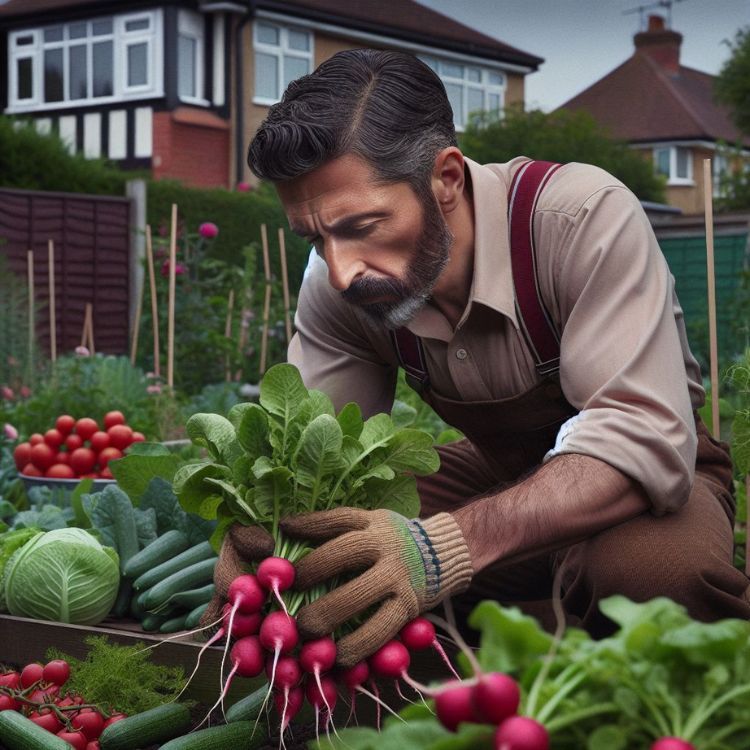
Radishes are the sprinters of the vegetable world. With some varieties ready to harvest in just 21 days, they are a rewarding choice for new and seasoned gardeners alike. Besides being rapid, radishes are also resilient and can be grown in both spring and fall for a double helping of peppery roots.
Planning Your Radish Patch
Starting radishes is straightforward. Choose a sunny spot with well-draining soil. You’ll want to plant radish seeds directly into the ground, as they do not take well to being transplanted. Space the seeds about an inch apart and cover them lightly with soil. Keep the soil moist, and you’ll see sprouts in just a few days.
Care Tips for a Bountiful Radish Harvest
- Water regularly to keep the soil evenly moist but not waterlogged.
- Thin out the seedlings to give each radish room to grow. This should be done early to avoid crowding and stunted growth.
- Harvest promptly once they’re the right size to avoid overgrown, pithy radishes.
Radishes are a no-fuss crop, but they do appreciate attention to watering and thinning. They’re also a fantastic crop for teaching kids about gardening, thanks to their quick growth and minimal care requirements.
Example: One gardener sowed radish seeds among her slower-growing veggies like broccoli. Not only did she harvest radishes quickly, but she also made efficient use of her garden space.
2. Spinach: A Leafy Green Race

Spinach is another fast performer in the garden. This nutrient-rich green can go from seed to salad bowl in 4 to 6 weeks. It’s also versatile, growing well in both cool and warm weather, although it prefers a bit of shade in the hotter months.
Sowing Seeds for Speedy Spinach
To get a head start, plant spinach seeds as soon as the ground can be worked in spring. For a fall crop, sow seeds in late summer. Spinach seeds germinate best in cool soil, so if you’re planting during a warmer period, give them some shade and keep the soil moist. Discover more about optimizing your plant’s growth in various conditions with our guide on using recycled gray water in your survival garden.
Ensuring Continuous Spinach Supply
To keep a steady supply of spinach, practice succession planting. Sow a new round of seeds every couple of weeks. As some plants mature and are harvested, others will be coming into their prime. This way, you’ll never run out of fresh spinach for your meals.
3. Baby Carrots: Tiny Timeline Toppers
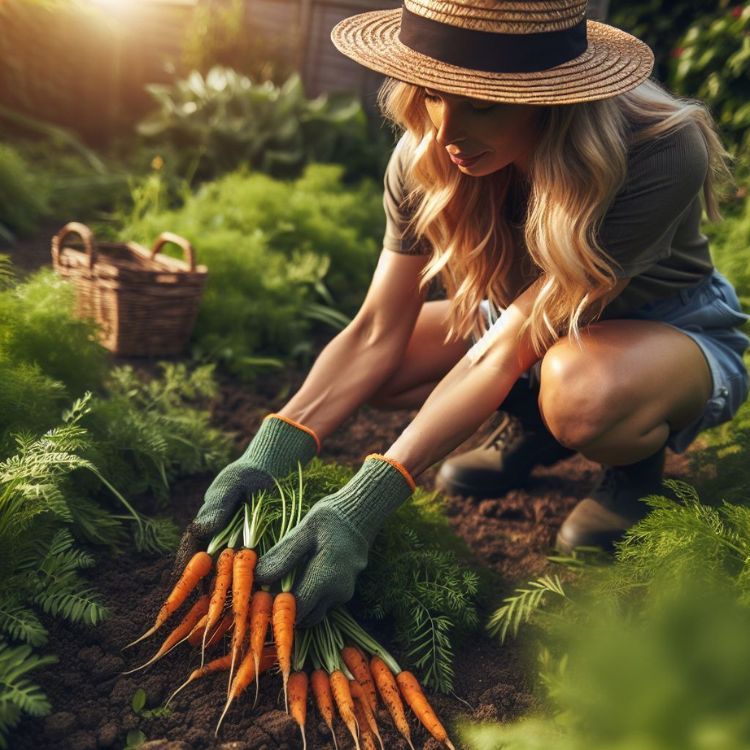
Baby carrots are not only adorable but also quick to mature. These tiny delights can be ready for munching in about 50 to 60 days, depending on the variety. They’re perfect for snacking, cooking, and adding a splash of color to your garden.
Choosing Carrot Varieties for Quick Growth
When selecting carrot varieties for speed, look for terms like ‘baby’ or ‘early’ in the name. These types are bred for a swift harvest and smaller size. ‘Little Finger’ and ‘Parisian’ are two varieties that mature quickly and are ideal for those looking for a speedy crop.
- Prepare the soil by removing rocks and breaking up clumps, which can obstruct carrot growth.
- Sow seeds directly into the ground, as carrots do not transplant well.
- Keep the soil moist for successful germination and thin seedlings to prevent crowding.
With the right conditions and a little patience, you’ll be pulling up bunches of baby carrots in no time. Remember, the key to growing fast carrots is to provide them with loose soil and regular water.
4. Lettuce: Leafy Green Lightning
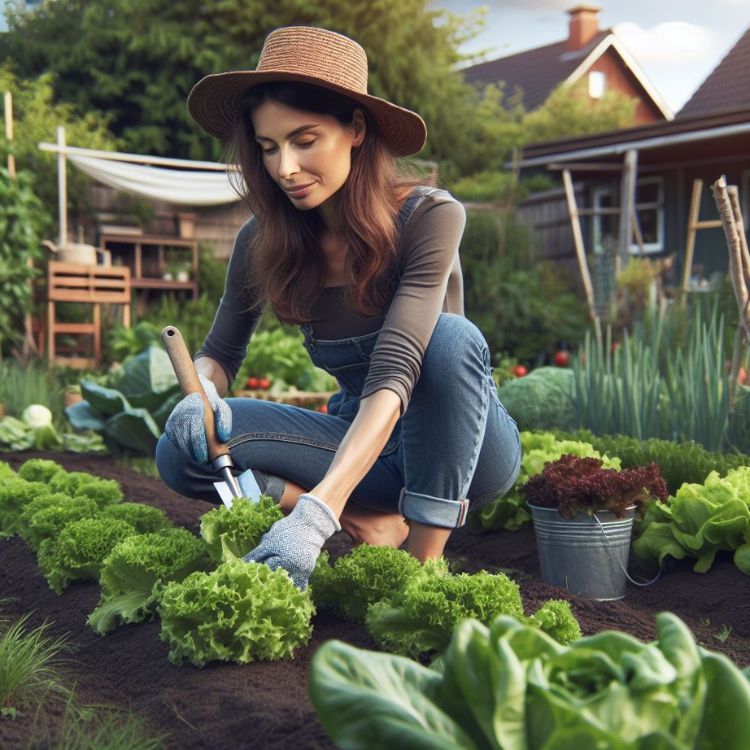
Lettuce is the go-to quick crop for many gardeners, with certain varieties ready to pick in as little as 30 days. Leaf lettuce, in particular, is ideal for those looking to get a rapid return on their gardening efforts. It’s also incredibly versatile, suitable for container gardening, and perfect for those with limited space.
Maintaining Moisture for Crisp Leaves
The secret to crisp, tender lettuce leaves is consistent moisture. Lettuce has shallow roots, so it requires regular watering to thrive. Mulching around your lettuce plants will help retain soil moisture and keep the roots cool.
Another tip is to water your lettuce in the morning. This allows the leaves to dry before evening, reducing the risk of disease. And remember, if you’re harvesting your lettuce by picking individual leaves rather than the whole head, always pick from the outside to give the inner leaves time to mature.
5. Arugula: Peppery Perfection in a Flash
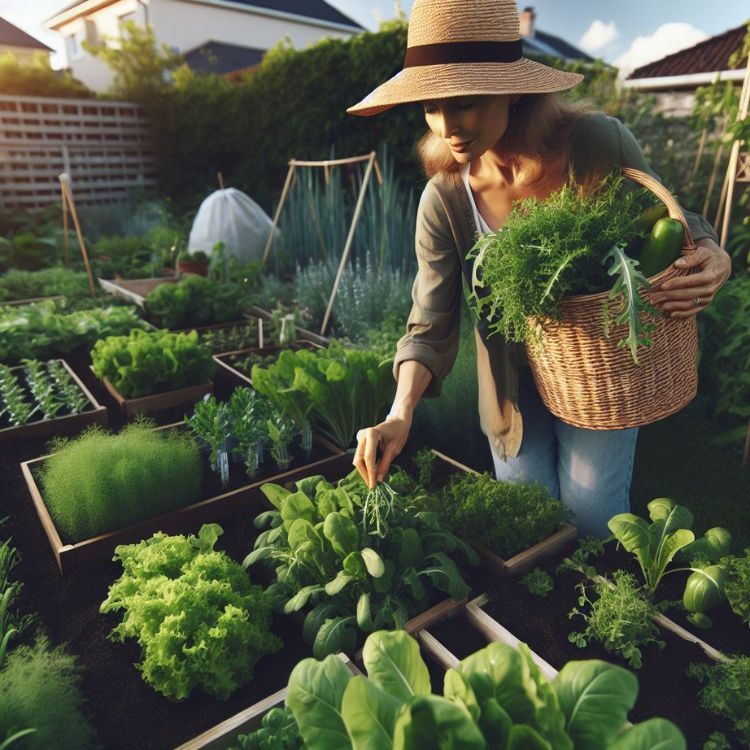
Arugula is a flavorful green that adds a peppery kick to any salad, and it’s as speedy as it is spicy. You can start harvesting arugula just 2 to 3 weeks after planting. It’s also one of the most cut-and-come-again crops, meaning you can snip what you need and watch it regrow for another round.
For the quickest harvest, sow arugula seeds in warm soil and keep them well-watered. Arugula prefers cooler temperatures, so if you’re planting in the heat of summer, find a spot that gets some afternoon shade.
Arugula can sometimes be a target for pests like flea beetles, so keep an eye out for tiny holes in the leaves. Covering your crops with a lightweight row cover can prevent damage and ensure a bountiful harvest.
Example: A friend once told me about her urban balcony garden where she grew arugula in small containers. Despite the limited space, she enjoyed fresh, peppery greens within a month of sowing seeds.
Getting the Best Out of Your Arugula
To get the best out of your arugula, harvest the leaves when they’re young and tender. Older leaves tend to be more bitter. If you let arugula grow too long, it will bolt, or go to seed, which also makes the leaves more bitter. To prevent this, harvest early and often, and sow new seeds every few weeks for a continuous crop.
Arugula Care for Quick and Consistent Cropping
Arugula is low-maintenance, but there are a few things you can do to ensure a quick and consistent crop. First, keep the soil moist but not soggy. Second, fertilize with a balanced liquid fertilizer every couple of weeks to encourage growth. And finally, harvest in the morning when the leaves are crisp and full of moisture.
6. Kale: Super Greens in No Time

Kale is a superfood that’s super easy to grow, and you can start harvesting baby leaves in about 3 to 4 weeks. It’s a hardy crop that can withstand cool temperatures, making it a great choice for early spring and late fall gardens.
When planting kale, choose a sunny location and well-draining soil. Sow the seeds about a half-inch deep and space them about a foot apart to give the plants room to spread their leaves. Keep the soil consistently moist, especially during dry spells.
Fast-Tracking Your Kale Crop
For a quick kale crop, focus on baby kale varieties that are bred for early harvesting. These tender, flavorful leaves can be snipped right into your salad bowl or smoothie without the need for cooking.
Kale is a nutrient-hungry plant, so be sure to enrich your soil with compost or a balanced fertilizer before planting. As your kale grows, you can side-dress with more compost to keep it happy and productive.
Secrets to a Non-Stop Kale Harvest
One of the secrets to a non-stop kale harvest is to pick leaves from the bottom up, leaving the center rosette to continue growing. This cut-and-come-again method allows you to enjoy kale throughout the season without uprooting the plant.
Most importantly, protect your kale from pests like cabbage worms by inspecting your plants regularly and using safe, organic pest control methods when necessary.
7. Mustard Greens: Spicy and Speedy
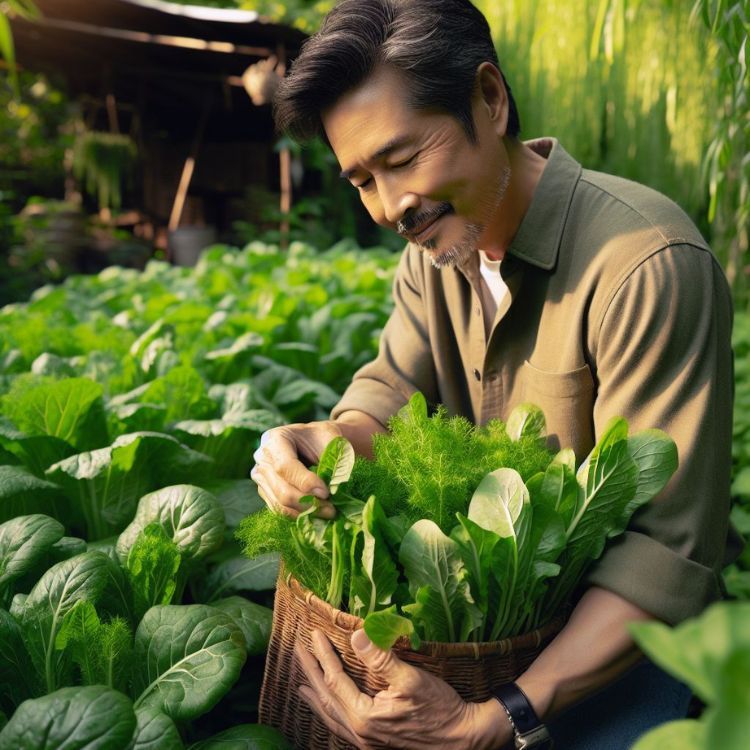
Mustard greens are another quick-growing crop, ready to spice up your dishes in as little as 30 days. They’re best planted in early spring or late summer for a fall harvest. Mustard greens can be eaten raw or cooked, adding a zesty flavor to a variety of recipes.
Cultivation Tips for Quick Mustard Greens
For the best mustard greens, sow seeds directly into rich, well-drained soil in a sunny spot. Plant the seeds a quarter-inch deep and keep the soil moist until they germinate. Once the plants are established, thin them to about 6 inches apart.
Keeping Mustard Greens Happy
Mustard greens like cool weather and can become bitter in the heat. To keep them happy, water regularly and provide some shade if temperatures start to soar. Harvest the leaves when they’re young for the best flavor, and sow new seeds every few weeks for a continuous crop.
8. Garden Cress: From Seed to Salad
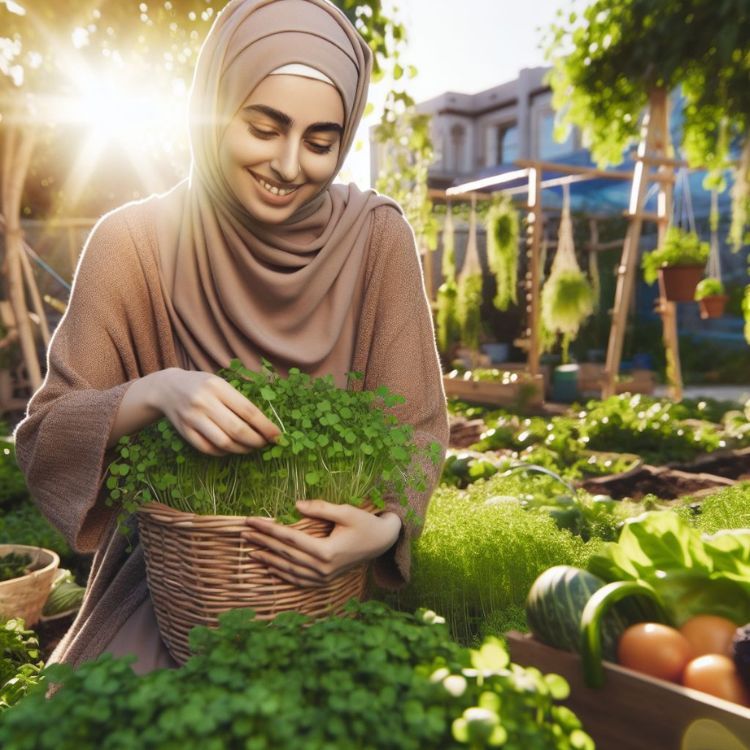
- Garden cress is an often-overlooked quick crop that’s ready to eat in as little as 15 days.
- It has a peppery flavor similar to arugula and mustard greens but is milder and great for garnishing dishes.
- Garden cress is incredibly easy to grow, even on a sunny windowsill.
Garden cress can be sown densely and cut as needed, making it an ideal crop for small spaces. It requires minimal care, just regular watering and the occasional feed with a liquid fertilizer.
Because garden cress grows so quickly, it’s a great plant to grow with children. They’ll be amazed at how fast the seeds sprout and develop into edible greens.
Sowing Techniques for Immediate Results
To get immediate results from garden cress, sow the seeds in a shallow tray filled with potting mix. Lightly cover the seeds with soil and keep the tray in a warm, sunny spot. Mist the soil to keep it moist, and you’ll have cress ready to harvest in just a couple of weeks.
Garden Cress Care for Continual Crops
Garden cress doesn’t need much care, but to ensure continual crops, it’s important to keep the soil moist and harvest regularly. If you let cress grow too long, it will become tough and bitter. For a steady supply, sow new seeds every week or two.
9. Bok Choy: Quick Asian Greens
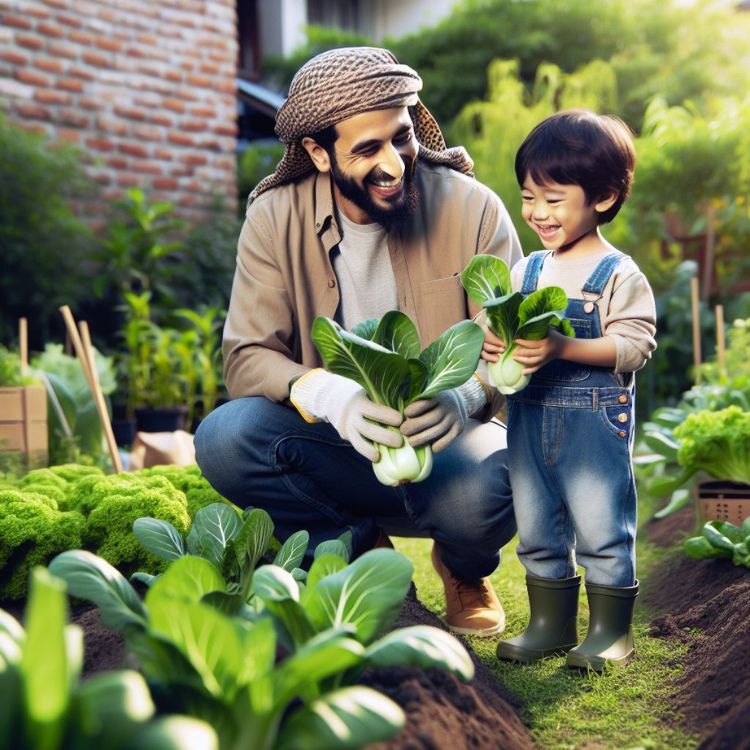
Bok choy, with its crunchy stems and tender leaves, is a staple in Asian cuisine and a quick grower in the garden. Baby bok choy varieties can be ready to harvest in as little as 30 days. It prefers cooler weather, so plan to plant early in the spring or in the fall for a crisp addition to your meals.
Accelerated Asian Delights
To get your bok choy off to a racing start, plant the seeds in rich, loose soil that’s been well-amended with compost. Bok choy needs plenty of water, so keep the soil consistently moist but not waterlogged. With its rapid growth rate, bok choy is perfect for succession planting. Sow new seeds every few weeks for a continuous harvest throughout the growing season.
The Art of Quick Bok Choy Bounty
Harvesting bok choy at the right time ensures tender leaves and stems. Cut the whole plant at soil level when it’s about 4-6 inches tall for baby bok choy, or let it grow a bit longer for larger leaves. If you prefer to harvest a few leaves at a time, always take the outer leaves and let the inner ones continue to grow.
10. Turnips: Swift Underground Gems

Turnips are an often underestimated vegetable that can add variety to your table quickly. Some turnip varieties can mature in just 30 to 60 days, making them an ideal crop for your quick-turnaround garden. They’re not only good for their roots but also for their greens, which can be sautéed or added to salads.
Fast Turnip Varieties to Try
When selecting turnip seeds, look for varieties like ‘Tokyo Cross’ or ‘Purple Top White Globe’ which are known for their rapid growth. Sow turnip seeds directly into the ground about a half-inch deep and thin seedlings to about 4-6 inches apart once they’ve sprouted. For more information on plants that grow in 30 days, check out this resource.
How to Achieve Rapid Turnip Turnaround
For the fastest turnip growth, keep your soil rich and well-watered. Turnips prefer a pH between 6.0 and 7.5, so test your soil and adjust accordingly. Remember to harvest turnips when they’re small to medium-sized; if they grow too large, they can become woody and less flavorful.
Harness the Power of Micro-Climates
Micro-climates in your garden can significantly speed up the growth of your vegetables. By understanding and manipulating these small pockets of different weather conditions, you can create the ideal environment for your plants to thrive.
Protection from the Elements
Use structures like cold frames or floating row covers to protect your plants from wind and cold. This can help you extend your growing season and get your vegetables to mature faster than they would if exposed to the elements.
Heat and Light Management for Quicker Growth
Maximize sunlight exposure by positioning your garden to get full sun, and consider using reflective surfaces to bounce light onto your plants. You can also use black plastic mulch to warm up the soil more quickly in spring, which can help heat-loving vegetables like radishes and turnips get a faster start.
FAQ: Fast Answers to Your Quick Growth Questions
Here are some quick answers to common questions about fast-growing vegetables:
Which vegetables will grow the fastest?
Radishes, spinach, and garden cress are among the fastest-growing vegetables, with some ready to harvest in as little as 21 days.
Can these vegetables be grown in pots?
Yes, many fast-growing vegetables like lettuce, spinach, and radishes can be successfully grown in pots or containers, making them ideal for balcony or patio gardens.
How can I speed up vegetable growth?
Choose quick-growing varieties, start seeds indoors if possible, use rich, well-draining soil, and ensure your plants receive plenty of sunlight and consistent moisture.
What soil is best for fast-growing vegetables?
A loose, loamy soil rich in organic matter is best for fast-growing vegetables. Ensure good drainage and a neutral to slightly acidic pH for optimal growth.
Can fast-growing veggies survive cold weather?
Some fast-growing vegetables like spinach, kale, and mustard greens can tolerate cold weather and can be planted early in the spring or late in the fall for an extended growing season.
There you have it, a garden full of fast-growing vegetables that can bring fresh, nutritious food to your table in under 30 days. By choosing the right varieties and providing them with the care they need, you can enjoy the fruits of your labor in no time. Remember, gardening is not only about the harvest; it’s also about the joy of nurturing life from the soil. So, grab some seeds, get your hands dirty, and relish the journey of growing your own survival garden.






